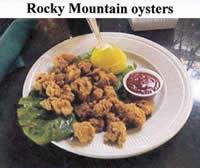 February 14, 2022 - I grew up in East Texas during the 1940s and 1950s, and must admit that my culinary experiences were very limited. I ate mostly meat, potatoes, and other vegetables that my dad grew in our small garden. I liked fried catfish, but never developed an appetite for the other little sea critters like shrimp, clams, oysters, and other like sea offerings.
February 14, 2022 - I grew up in East Texas during the 1940s and 1950s, and must admit that my culinary experiences were very limited. I ate mostly meat, potatoes, and other vegetables that my dad grew in our small garden. I liked fried catfish, but never developed an appetite for the other little sea critters like shrimp, clams, oysters, and other like sea offerings.
It was not until I enrolled in college in Waco that I was introduced to the now popular pizza pie. So, I was way behind the culinary curve in most areas.
In 1974 we moved to Littleton, Colorado where I took a VP position with an insurance company. Being the new guy on the block, I had to endure some good-natured ribbing and pranks in order to become accepted by the herd. It was at this point that I was introduced to a delicacy, or a Hors d’oeuvre, to many Colorado natives.
I had lunch with one of our local agents one day and he asked me the question, “Have you had any Rocky Mountain oysters yet?” I hated to reveal my ignorance to the guy, but I had no idea what he was referring to. So I replied, “Well, Bill, I don’t think I have ever eaten any. In fact, I don’t like oysters.” That comment produced a chuckle from Bill and he then told me what they really are. I was stunned. “Do you mean that people actually eat those things?” was my reply, knowing I had fallen for the loaded question. He laughed and said, “Oh, sure. They are quite a delicacy out here in the northwest. You just got to try some.” I never did eat one.
In truth, “Rocky Mountain Oysters” is a term for a dish made of bull, pig, or sheep testicles. The organs are often deep-fried, coated in flour, pepper and salt, and sometimes pounded flat. This delicacy is most often served as an appetizer with a cocktail sauce dip.
In the western part of the United States, most people lived off the land. “Waste not – want not” is often the idiom of choice when living off the land. Have left-over green tomatoes from your summer garden? Fried green tomatoes it is. Manure from your barn? Throw it on the compost pile. Found yourself with buckets of testicles from the annual branding and castrating of spring calves? Tuck it in, pardners - we’ve got some eating to do.
It’s safe to say that the practice has appalled and fascinated the uninitiated for years. Many “hunter and gatherer” cultures would not want to waste anything. The dish, purportedly mainly cowboy fare, is most commonly found served at festivals, amongst ranching families, or at certain specialty eating establishments and bars.
Just as there are legends about the organ meats such as liver and heart, there’s also the historical notion that consuming testosterone-rich testicles can be a masculinity-booster for those gentlemen seeking that extra edge either on the battlefield, or with the ladies. There is a supposed “Viagra” effect, according to tradition.
I have read that many ranches collect them during branding, and when they are all done they will have a party afterwards. The “oysters” will be the main meal – a full course to go along with the beer and whiskey.
Going back to my culinary roots, I feel that this delicacy is one that I can do without, just like the real oysters, shrimp, and crabs. I just wanted to warn those of you who visit one of the western states, that you might get asked the same question I was, but unlike me, you will now know what Rocky Mountain oysters really are.









